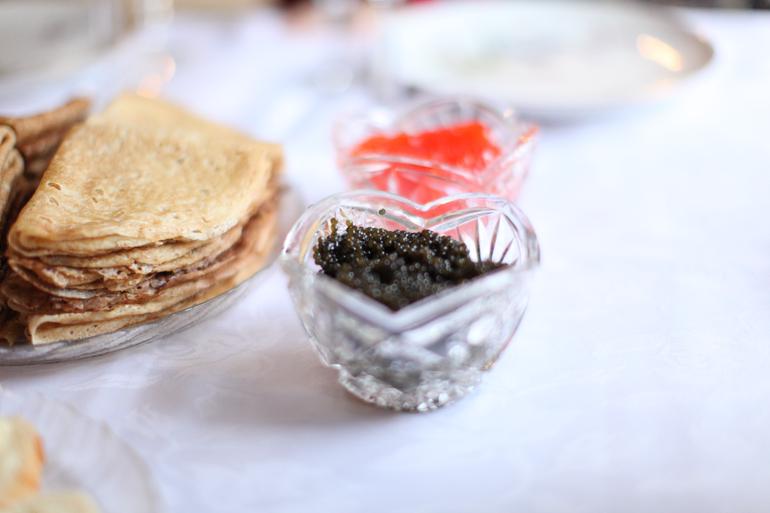
Two Big Shifts in Luxury and Personal Care
Looking at the annual long list of shifts our team compiled, I was struck by two that have accelerated more quickly than expected.
Looking at the annual long list of shifts our team compiled, I was struck by two that have accelerated more quickly than expected. There is lots to be learned in these two shifts, and even more so in their acceleration.
Shift 1: Hair Colour – Blondes Are Not Having All the Fun
It used to be that hemlines followed economic prosperity. The idea was: the stronger the economy, the shorter the skirts. Improved economic performance allows for increasing self-expression and experimentation; in contrast, in times of crisis, people move toward conformity.
Being inside and spending our lives sitting down, people are searching for new ways to signal their values.
Hair colours are the new hemlines.
Young people continue to be inspired by streamers and performers—is there a difference?—like Halsey and Rico Nasty, who have adopted increasingly unnatural hair colours. They need to stand out on smaller and smaller screens. Also driving the shift are our avatars. Metaverse spaces like Fortnight let us experiment with the most outre of coifs, and we can adopt our favourites IRL.
Outside of the Gen Z bubble, increasing alienation with archetypes like the “Girl Boss” is leading to a blonde backlash. Even Elizabeth Holmes went dark for her trial. If the world is going downhill and traditional ideals are what got us here, expect those at the top to abandon traditional status signifiers (including expensive dye jobs) to hide their culpability. On the flip side, expect increasing blondeness from those who might want to signal that they identify with traditional values.
Acceleration Driver: Devirtualization
Accelerated re-entry and movement away from tight-knit pandemic social circles are driving more signalling of class, habits and values. We are all growing out our peacock feathers. As well, increased political polarization makes signalling even more important. Heaven forbid you end up in a conversation with a ‘lib’! Being clear about your organization’s values allows customers to see themselves in your brand and products, and to choose them as tools to actualize their identities.
Shift 2: Caviar Becomes an Everyday Luxury
I was not going to write about caviar, but the New York Times forced my hand. If Caviar Bumps Are All the Rage, I get to do a big “I told you so.” Short history lesson here: caviar, like oysters, was not always a luxury item. Both were enjoyed for similar reasons: they were plentiful and provided high protein at a low cost. In the 12th century, the liquid would be pressed out and the caviar was shaped into loaves and shared in slices. In the 1800s, because of its low price, caviar was used on baking in the place of poppy seeds! By the 1900s, caviar-producing sturgeon had been overfished, and caviar began its second life as a delicacy. Today, better farming practices and quality affordable roe from domestic fish like trout, bowfin, and hackleback have brought new life to caviar.
The growth in caviar popularity was to be expected; it is a pescetarian-friendly option for charcuterie boards and still carries its high-class connotations.
First came tinned fishes like anchovies and the popular acceptance of their flavour. With those now established as popular snacks, caviar is appearing on more menus and new brands have started to capitalize on increasing demand.
Acceleration Driver: Consumption as Identity
Originally, I expected growth of demand for caviar to come from democratization. The product is more readily available and cheaper to produce than ever before. Customer openness to its flavours have also allowed for category expansion into things like salmon roe. Instead, like in all areas of luxury spending, demand is being driven by perceived product scarcity (it isn’t scarce) and not a more democratic price point. Chanel bags have experienced multiple price hikes in the past 12 months with the price of their classic 11.12 bag increasing by almost $1,000. Similarly, caviar prices have stayed high and caviar substitutes are pricing in equivalent ranges to traditional sturgeon.
So: even facing economic headwinds, there are still categories of customers who want to spend. To know how to reach and incentivize them, talk to one of our anthropologists.
—
A Note about Shifts
Every industry and every customer segment experiences changes in attitudes and preferences. These shifts can be short-term (aka trends—not our focus) or enduring (aka shifts—useful insight). Traditional customer research and trend analysis does a great job at taking the current temperature. If you are looking to make long-term change and improvement, you need to think farther out. Interested in the shifts that are relevant to your business? Get in touch to chat about how we can help you uncover them.
Quick Hits:
Our colleague Sarah Phillips had a great piece in Strategy about how a Pride campaign from Aesop opened her mind to some of her blindspots.
Car free cities are loved by their residents, but hated until they experience it. How do cities get over that hump?
If you are a client of ours, we have probably talked about the end of authority. Matt Klein, Trends and Strategy Lead at Reddit, has a great take on that in Distributed Trust.



